|
The Eugoa Walker group of
genera
This
group of genera is loosely held together by several characters, none of which is
seen in all of them. Its validity therefore needs further investigation.
All
except Cyclosiella Hampson have female
genitalia in some or all species where there is a strong appendix bursae, the
bursa itself tending to a rather lateral position, being somewhat spherical and
densely spined throughout. Not all Eugoa species have a marked appendix bursae. Both Cyclosiella
and Trischalis Hampson have a more flimsy corpus bursae; an appendix
bursae is seen in one Trischalis.
Eugoa,
Holocraspedon Hampson,
Meteugoa Hampson and Malesia
van Eecke all have somewhat noctuid-like forewing markings and coloration,
the fasciation usually oblique. The forewing cell contains two dark dots; these
are close together and rather oblique in Eugoa
species where both are retained, but further separated and longitudinally
placed in the other three genera.
All
forewing veins are present on the cell, but distal branching is restricted to
independent bifurcations: (R2, R3) and (R4, R5) in Notata
Hampson, Holocraspedon, Meteugoa and Malesia
(where these may be stalked together); (R3, R4), (R5, M1) and (M2, M3) in Eugoa,
Trischalis and Cyclosiella (Fig
7).
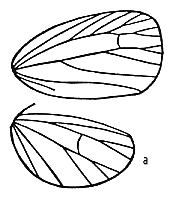
Fig 7a: Cyclosiella
dulcicula
Swinhoe
|
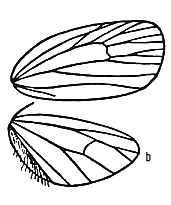
Fig 7b: Eugoa
humerana
Walker
|
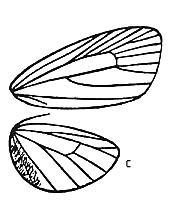
Fig 7c: Diduga
pectinifer
Hampson
|
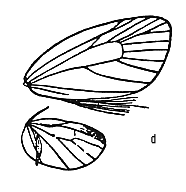
Fig 7d: Diduga
trichophora Hampson
|
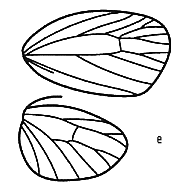
Fig 7e: Trischalis
absconditana Walker
|
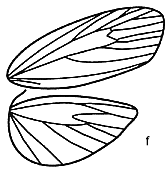
Fig 7f: Meteugoa
ochrivena
Hampson
|
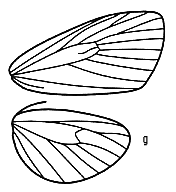
Fig 7g: Holocraspedon
nigropunctum Hampson
|
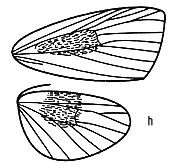
Fig 7h: Notata
parva Hampson
|
>>Forward
<<Return to Contents page
|








